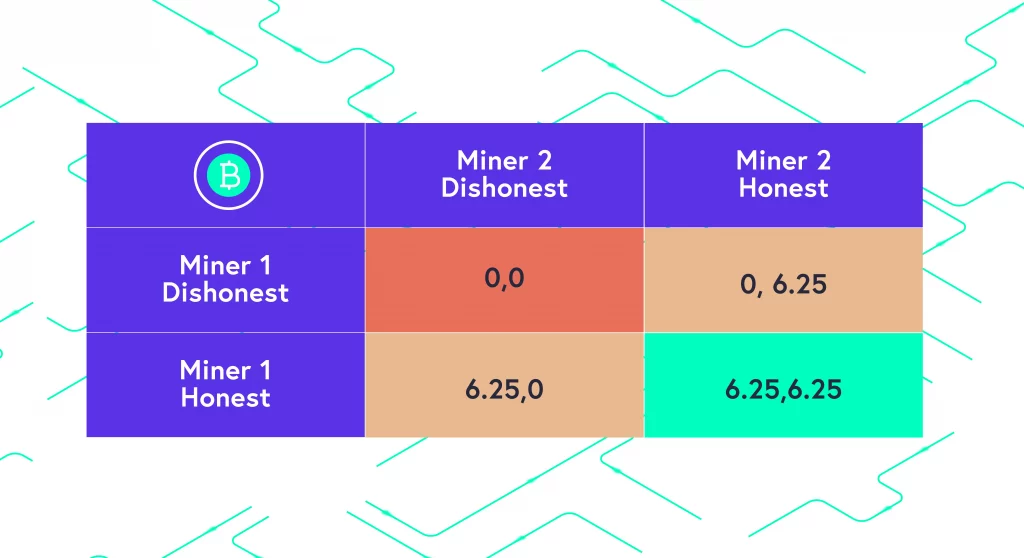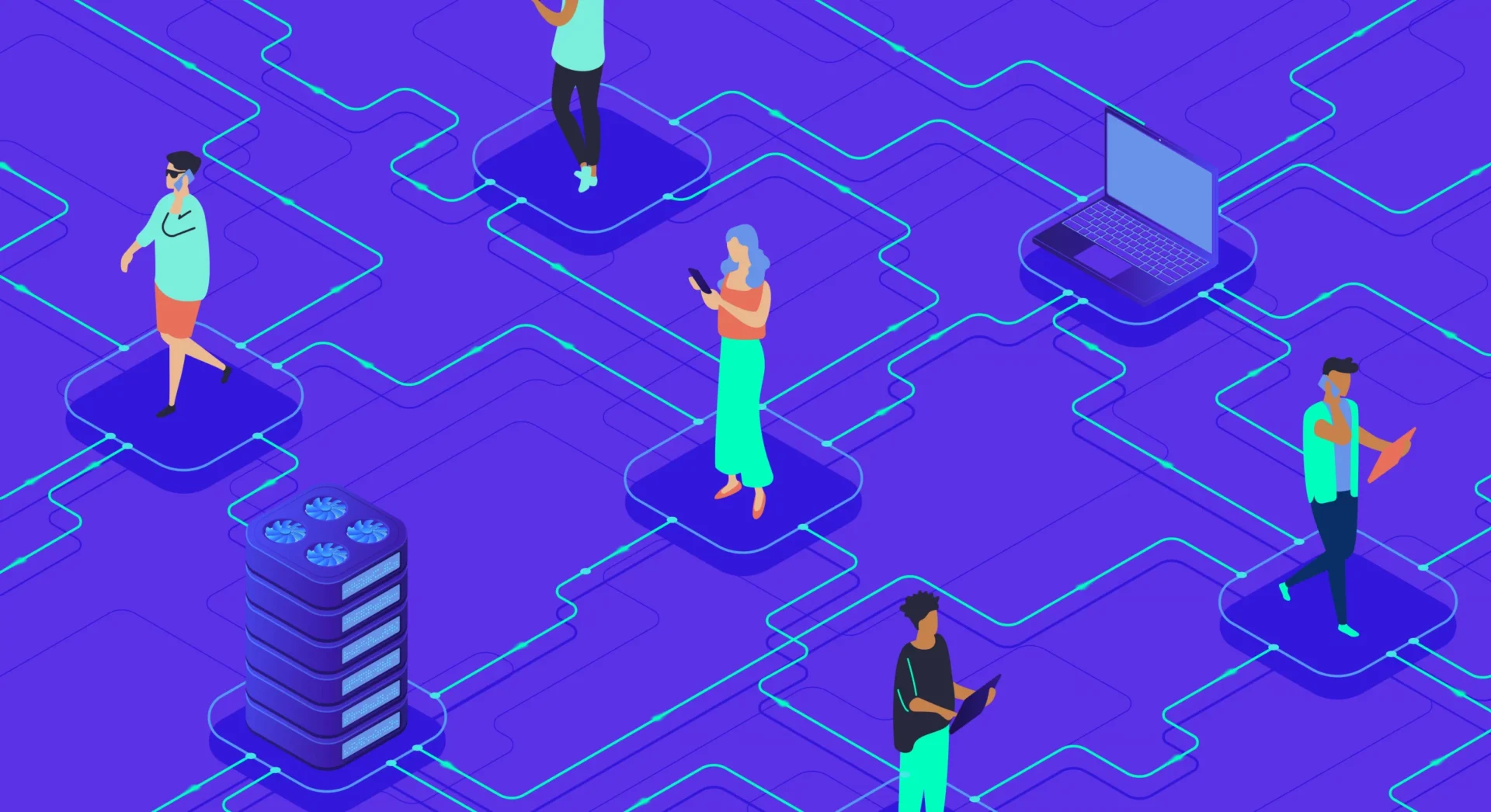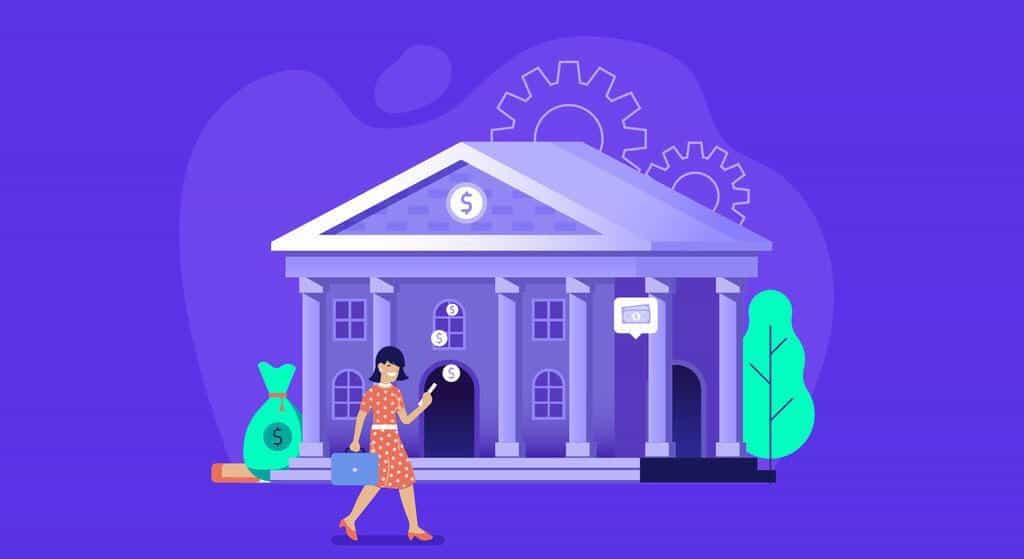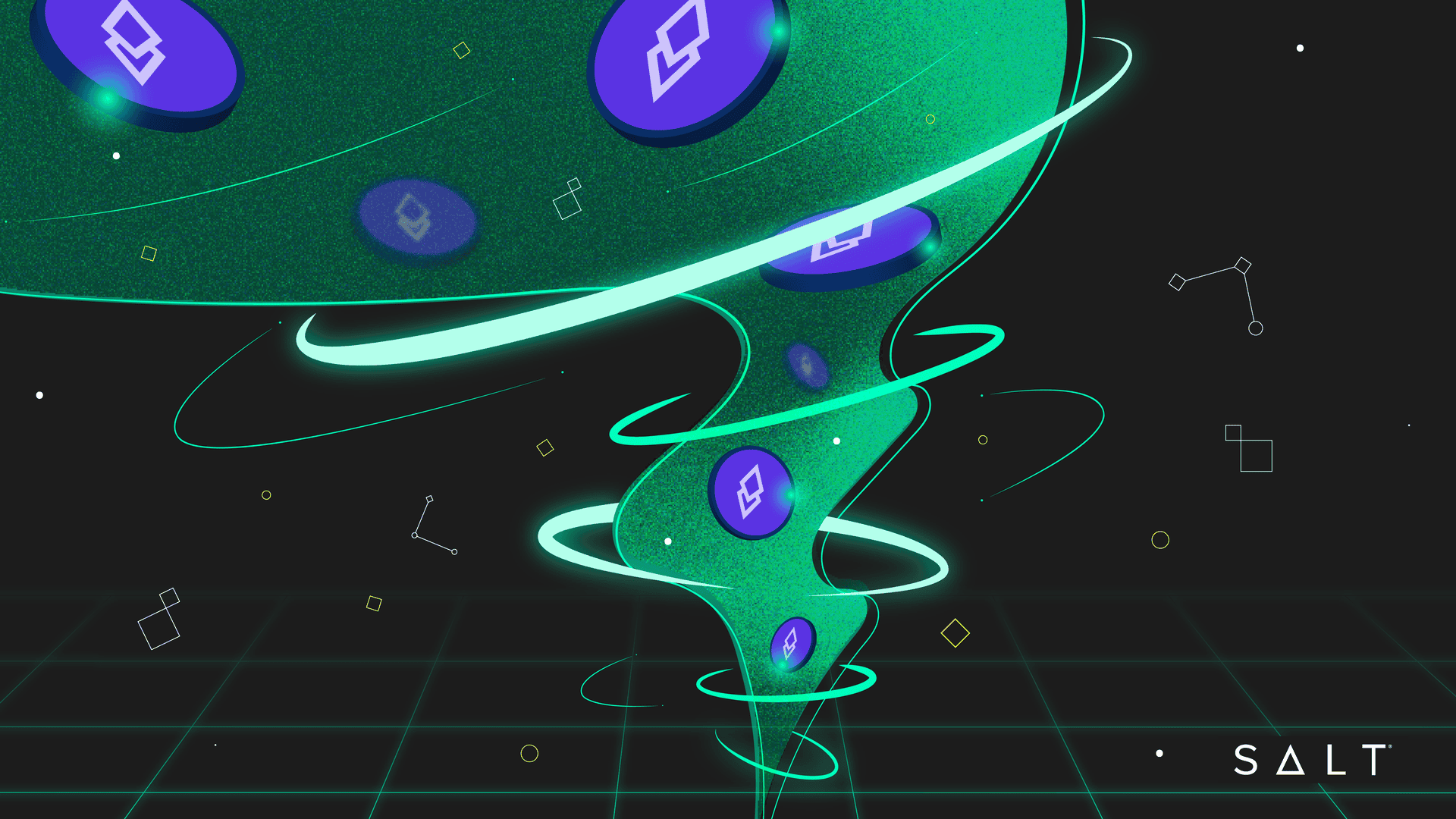Competition drives markets. In traditional financial markets, however, competition is limited to the production of goods and the buying and selling process. With Bitcoin, competition plays a far-deeper role. The minting of new bitcoin, as well as the processing and verification of transactions, are all made more efficient, accurate, and secure, thanks to competition. It’s no surprise, then, that game theory plays a pivotal role in the inner workings of the Bitcoin ecosystem.
A brief explanation of game theory
Game theory models the strategic interaction between players in a scenario with set rules and outcomes where the players are rational and looking to maximize their payoffs. In effect, it’s a more detailed, nuanced way of looking at how incentives affect how things get done.
For example, if your job is to shovel 100 pounds of stone into a hole and you’re all alone and have all the time you want, there’s no game theory involved. On the other hand, if someone else is given the same task and you’re each working with the same pile of stones, the dynamics of the situation change.
They change further if only the person who shovels the most gets paid. And, naturally, if you get paid according to how much you shovel, the outcome of your actions would change in yet another way. Each of these situations will be impacted by game theory and its many models.
Although Bitcoin seeks to espouse concepts like “fairness,” “transparency,” and others that are often incongruent with competition, game theory still plays a primary role in the Bitcoin universe.
How does game theory apply to Bitcoin mining?
Bitcoin mining involves solving math problems that are used to create new bitcoin and verify transactions. To continue with the stone shoveling example, if you have as long as you want to move the pile of stones, you may choose to take your time. Your shovel may move slower than if someone else were involved in the task because then the speed at which you shovel would determine whether you get paid more, less, or at all.
The fact that multiple miners compete to verify transactions and generate coins gives Bitcoin an inherent efficiency: The job gets done faster. To dig a little deeper, three types of game theory driving this process include zero-sum theory, congestion theory, and the Nash equilibrium. Let’s take a closer look at how these concepts work.
Bitcoin mining and zero-sum theory
Zero-sum theory dictates that the “winner” gets the spoils and everyone else walks away with nothing. In the mining of bitcoin, the first person to solve a problem gets the value associated with completing the task. Everyone else gets nothing. If you could take a snapshot of the nanosecond a particular hash is found, you would see one user getting rewarded for their work and the others getting nothing.
However, because the Bitcoin system requires so many problems to be solved all the time, in reality, many miners can earn a relatively steady income. The strategies they use are governed by two other game theory concepts — the congestion theory and the Nash equilibrium.
Bitcoin mining and congestion theory
Congestion theory stipulates that the amount each player gets depends on the resources they choose and how many other players choose the same resources.
For example, imagine there are two stations with trains heading to the same destination, and each train can hold only 10 people. One train station is five miles closer to the destination. If there are 100 people, and everyone goes to the closer station, one train will have to go back and forth 10 times. On the other hand, if some of the passengers go to the closest station and others go to the station farther away, there will be less congestion, and everyone will arrive at the destination sooner.
In Bitcoin mining, many of the decisions of the miners depend on congestion theory. If there was only one miner, all the spoils would go to her or him. On the other hand, Bitcoin is open to all, so each miner has to decide whether they will get in the game — and add to the congestion — knowing that more people are bound to get in the game, decreasing their chance of winning.
Once a miner decides to get involved, they then have other decisions to make regarding the equipment they choose. Faster equipment provides an advantage, similar to getting on the closer train. However, the quicker the equipment, the more electricity it takes to run, which increases the cost of mining.
If a miner’s earnings won’t sufficiently offset the cost of electricity, they may choose not to get involved. They may also choose to forego setting up a mining system and join a mining pool instead, where the electricity costs are absorbed by multiple participants. Congestion theory dictates which “train” each miner takes, as well as when and how they get involved.
In addition, the way the decisions of each miner affects the others is governed largely by another game theory concept: the Nash Equilibrium.
Bitcoin mining and the Nash Equilibrium
In the Nash equilibrium, named after mathematician John Nash from the movie A Beautiful Mind, each “player” recognizes that while they have similar goals, not everyone can get exactly what they want. Therefore, some will choose to settle for a less-desirable outcome, satisfied with the fact that they are at least getting something. All players agree to proceed, happy to share the spoils.
For example, continuing with the stone shoveling scenario, you may be stronger and faster than the other shoveler. Both of you agree to shovel for the same amount of time, but you get 70% of the money while the other shoveler only gets 30%. The other person could protest, but realizing that something is better than nothing, they agree to the terms. At this point, an equilibrium is established. At the end of the day, you both earn money and walk away satisfied.
The worldwide community of miners also follows Nash equilibrium principles. Some miners have more money than others and can afford to purchase the latest mining computers, capable of solving specific hashes faster than older models. Other miners may not have as much money, but they live in areas where electricity is less expensive. They can, therefore, spend less than wealthier miners who live in areas where electricity is more costly. Some live in places where it will never be profitable to mine, so they join a mining pool instead.
Each miner recognizes that their limitations dictate how much they will get. At the same time, all agree to participate, satisfied with their portion at the end of the day — even if it’s just a small fraction of a bitcoin.
How miners are incentivized
Zero-sum theory, congestion theory, and the Nash equilibrium only work because of the ways miners are incentivized and dissuaded from cheating the system. Before mining rewards are approved, the technical infrastructure enforces the “trustless” nature of the Bitcoin network. If miners do not adhere to protocol rules, their block submission will be rejected by other nodes in the blockchain. All network nodes including other miners verify the ledger entries packaged into a new block. If entries are considered invalid, or the block hash doesn’t meet network requirements, the miner’s result will be rejected and the 6.25 BTC will be awarded to another miner.
While the block rewards are enticing at current BTC valuations, there are other financial implications that compel miners to either continue or suspend network operations. No miner will win the worldwide competition each time a new block is added (~every 10 minutes), so they must weigh the probability of profitable successes. There are other factors to consider, too. For example, some miners may decide to bow out when electricity becomes too expensive. Others however, may have a longer time horizon and decide to accept the risk of energy expenditure, calculating that miner attrition will increase their chances of winning new block rewards. In other words, fewer miners in the network means more chances for the remaining miners to profit. For those adopting this viewpoint, the potential of solving enough blocks to maintain business profitability outweighs the risk of any short-term loss related to high energy costs.
How bitcoin is distributed
Every block consists of many small transactions. When a block is mined, the winning miner is awarded 6.25 bitcoin plus all transaction fees for each transaction they were able to package within the block. The more blocks you are able to solve, the higher your reward. In other words, you get a bigger piece of the pie. Hunger for more slices of pie incentivizes miners to purchase more powerful equipment or move to areas with lower electricity costs.
Game theory and the surety of the Bitcoin network

In a Nash equilibrium, although the individual participants would like to either get more rewards or a different type of reward, they agree to settle with getting something of value rather than nothing. The Bitcoin network compels miners to play by an agreed set of rules to add transactions to the distributed ledger, or their work will be summarily rejected. At the same time miners add security to the network by expending expensive energy that chains each new block to the preceding block via a well established mathematical algorithm.
Each miner is, therefore, a generator of new bitcoin liquidity as well as an auditor, checking the details of network transactions. Even though each problem solved involves a zero-sum game and congestion theory dictates how each miner approaches the task, everyone works in a happy Nash equilibrium.
In the end, game theory is an underestimated, yet essential, element of the Bitcoin network. As each miner plays their role, historical transactions are kept secure and new transactions unanimously approved, which helps maintain Bitcoin’s position as the number one digital currency in the world.








